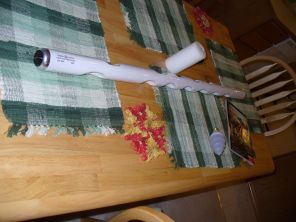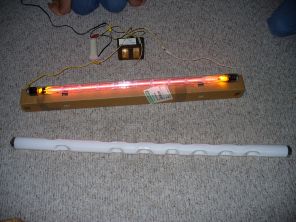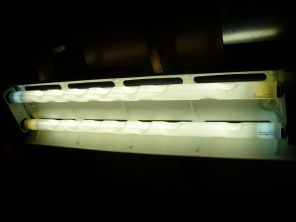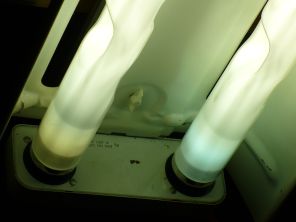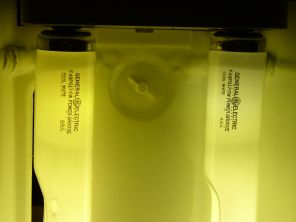Last change: September 03 2019
GE F48PG17/CW Powergroove lamps
A sad tale! Pics taken July 2007
Video at bottom of page.
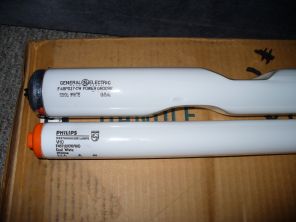
2 comparisons here- firstly to a Philips F48T12/CW/VHO lamp, which is electrically the same, but a lot less fun ;)
The second comparison is not as obvious, but just as valid- the low pressure sodium lamp firing up is a Thorn 140W SLI/H linear sodium. The technology in these lamps- using a non- circular cross section- was jointly developed by BTH Mazda and GE in the 1950s, GE went on to use it for Powergroove fluorescent lamps, whilst BTH (a lot later, Thorn) used it for linear low pressure sodium lamps.
The second comparison is not as obvious, but just as valid- the low pressure sodium lamp firing up is a Thorn 140W SLI/H linear sodium. The technology in these lamps- using a non- circular cross section- was jointly developed by BTH Mazda and GE in the 1950s, GE went on to use it for Powergroove fluorescent lamps, whilst BTH (a lot later, Thorn) used it for linear low pressure sodium lamps.
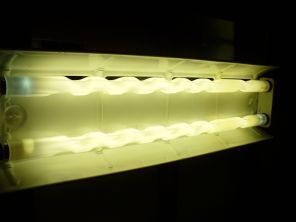
Some nice shots of a couple of the lamps in operation in a suitable shop fitting- it was intended for VHO lamps hence the sockets are rotated 90 degrees from what they should be for a PG lamp- the dimples should really face up/down. The fact that some of the pics look a little brown is down to the interaction between the camera shutter and the 120Hz flicker of the lamps- in real life they look just like the /CW designation suggests they should.
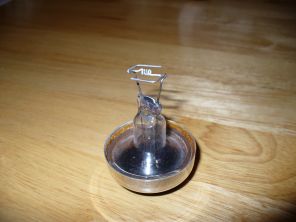
Now this picture shows a really rare sight- a closeup look at a new PG cathode! This should also get you asking why I broke open one of these rare lamps...well the answer is, I didn't!
Unfortunately, this lamp was damaged in transit, a near perfect break at one end causing the cathode assembly and end cap to part company with the rest of the lamp.
So 1 down, 11 to go...
Unfortunately, this lamp was damaged in transit, a near perfect break at one end causing the cathode assembly and end cap to part company with the rest of the lamp.
So 1 down, 11 to go...
Here's a short video of 2 of the lamps just after they were first switched on, you can see the arcs rotating round the electrodes, a really cool sight...
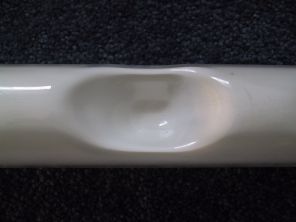
This is where the story gets sad though- out of 12 lamps, one was broken in transit, but as we began to test the rest, a sorry story emerged...as I write this, about half of them when tested, worked for between 1/2 and 3-4 hours, then went out- looking like they had lost the internal gas fill- on closer inspection there seems to be small bubbles and imperfections in the glass where the indentations have been pressed into the tube (have a look at full size version of pic above). Our best guess is that the heat stress of running the lamps has caused these defects to leak, slowly losing the gas fill...
All the lamps in the case seem to be the same, looks like I got a bad batch! Ah well, at least I'll have some for display if nothing else <sigh>
Thanks to James, Alain, Jim, jercar954 for help with this odyssey!
All the lamps in the case seem to be the same, looks like I got a bad batch! Ah well, at least I'll have some for display if nothing else <sigh>
Thanks to James, Alain, Jim, jercar954 for help with this odyssey!
